12 Spring Lawn Care Tips for Knoxville, TN
BY ABDUL WADOOD | MARCH 22ND, 2023 | KNOXILLE, LAWN CARE, TENNESSEEWhen you live in the foothills of the Great Smoky Mountains and have a front seat to the stunning Tennessee River, as Knoxville does, you have some of the best views in the world. But what’s the point of all that if the view of your yard from your front window is disappointing?
Want a great view? It starts with some early-season work on your lawn. Here are 12 things you can do to give your lawn a huge boost this spring.
In this article:
- Prep your lawn equipment
- Treat for diseases
- Rake debris
- Dethatch, if needed
- Test your soil
- Fertilize
- Overseed warm-season grass
- Mow your lawn
- Get rid of weeds
- Get rid of pests
- Water your lawn
- Wait to aerate
1. Prep Your Lawn Equipment
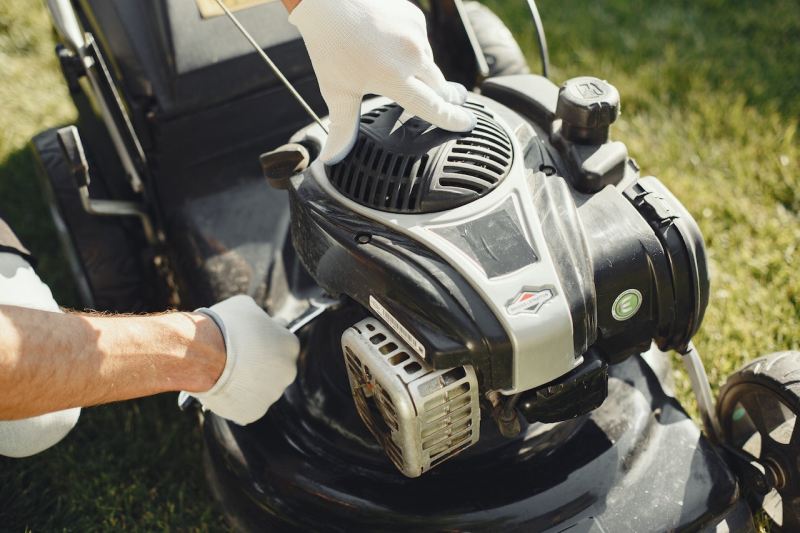
Photo Credit: Pexels
When spring starts, it’s time to get your lawn equipment ready. Check whether your lawn mower, weed eater, hedge trimmer, and leaf blower are in good shape.
Here’s how to prepare your lawn equipment for spring and the upcoming summer.
- If you use gas-powered equipment, fill the tank. Also, replace the air filter and spark plug and change the engine oil.
- If you use electric equipment, check the battery level and replace the battery if necessary.
- Sharpen your mower blade. A dull blade will leave ragged edges on leaf blades, exposing them to disease.
- Sharpen your hedge trimmer blades if necessary.
- Ensure your weed eater has enough line.
Neglecting your lawn equipment can be dangerous to your lawn by increasing the risk of disease in your grass.
When to sharpen your lawn mower blade
Cut a patch of your lawn with your mower. If the grass looks uneven, the blade needs sharpening.
Generally, you should sharpen your lawn mower blade at least a few times a year, especially before the first mow of the season.
How to sharpen your lawn mower blade
- Wear protective eyewear and gloves.
- Disconnect the spark plug and empty the gas tank.
- Use a wrench to remove the bolt on the blade.
- Clean the blade with a dry rag. You may also use a paint scraper.
- Place the blade in a vice and use a file or grindstone to sharpen it. Push the file in one direction, following the blade’s angle.
- Repeat on the other side.
That’s it. Your lawn mower is all set.
2. Treat for Diseases
Fungi love springtime heat and humidity. When you notice faded spots in your lawn, take immediate action to prevent the spread.
- Plant cool-season grasses that are less prone to diseases.
- Irrigate your lawn correctly.
- Ensure proper drainage.
- Monitor and adjust your lawn’s nitrogen levels.
Here are the diseases to watch out for in your Knoxville yard.
- Dollar spot
- Snow mold
- Brown patch
Dollar Spot
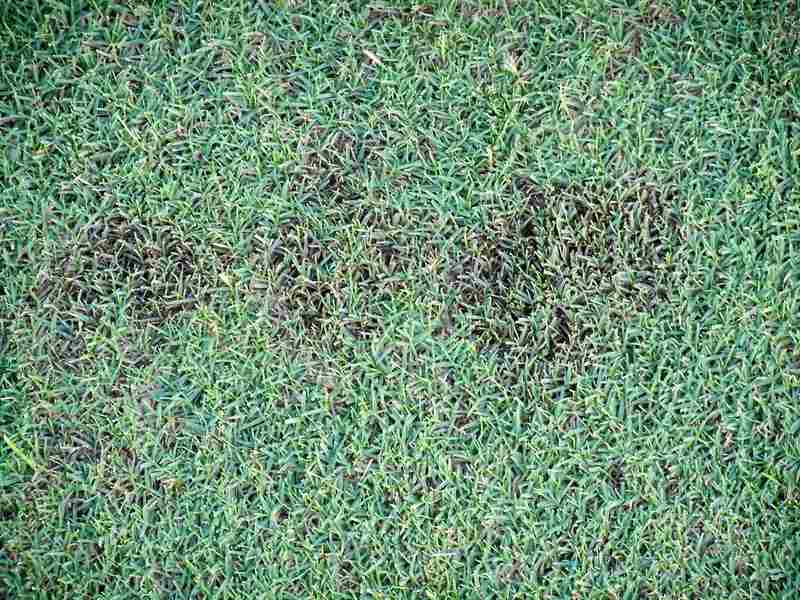
Photo Credit: Scot Nelson / Flickr / CC0 1.0
What to look for
Dollar spot appears as straw-colored spots about the size of a dollar coin. A cottony white growth shows up on top of the grass in the morning.
How to treat dollar spot
You may need to try several fungicides to eliminate this disease, as there are many strains of them. Each variety of the fungus can be immune to different kinds of fungicides.
Snow Mold
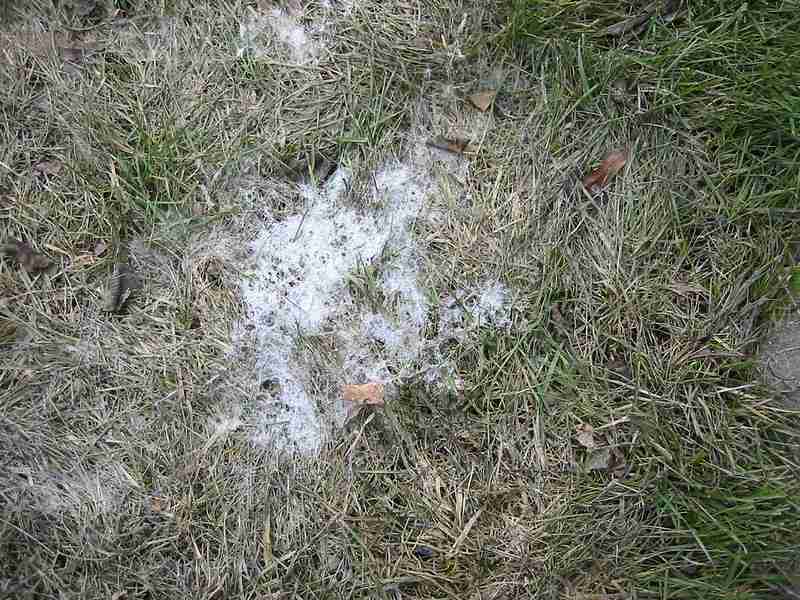
Photo Credit: noricum / Flickr / CC BY-SA 2.0
What to look for
There are two kinds of snow mold – gray snow mold or Typhula blight, and pink snow mold or Fusarium patch. Gray snow mold appears as perfect circles or irregular patches. It tends to damage only the glass blades. Pink snow mold looks similar but has a pinkish tint. It’s more dangerous as it can damage both grass roots and blades.
How to treat snow mold
Rake the mold, then treat with a fungicide that includes azoxystrobin, bacillus subtilis, or propiconazole.
Brown Patch
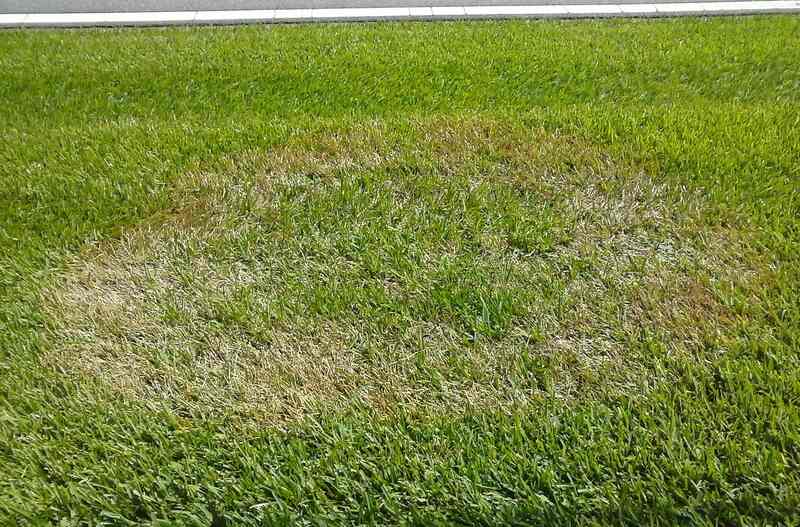
Photo Credit: Scot Nelson / Wikimedia Commons / CC0
What to look for
Brown patch usually appears as circular or irregular-shaped patches of brown or gray grass on your lawn. These patches can range from just a few inches in size to several feet wide. The symptoms will usually show up by late spring.
How to treat brown patch
Use a fungicide that includes triadimefon, PCNB, propiconazole, myclobutanil, or thiophanate-methyl as one of its active ingredients.
3. Rake Debris
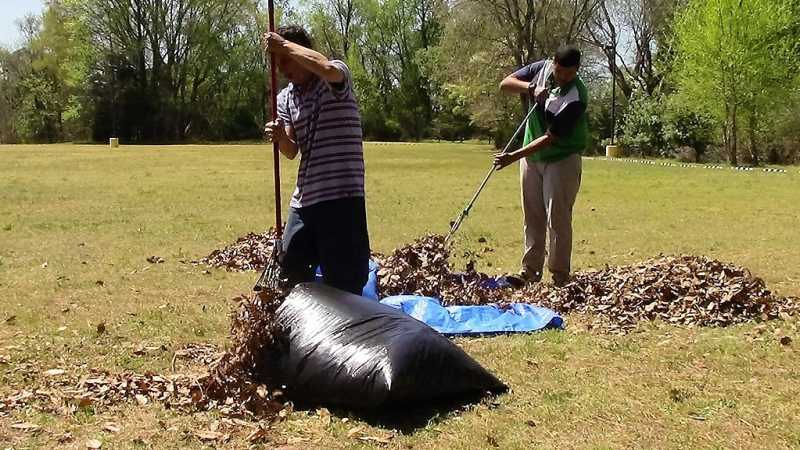
Photo Credit: Bigmouth1 / Wikimedia Commons / CC BY-SA 4.0
Though the weather is starting to warm up, the effect of winter is still there on your lawn. Remove debris, fallen branches, and dead plants from your yard to give your lawn a chance to breathe.
Fallen leaves block your grass from receiving enough sunlight, water, air, and nutrients. You can also get rid of the thatch accumulated during winter by raking your yard. Raking your yard also splits grass blades and promotes straight grass growth.
4. Dethatch, If Needed
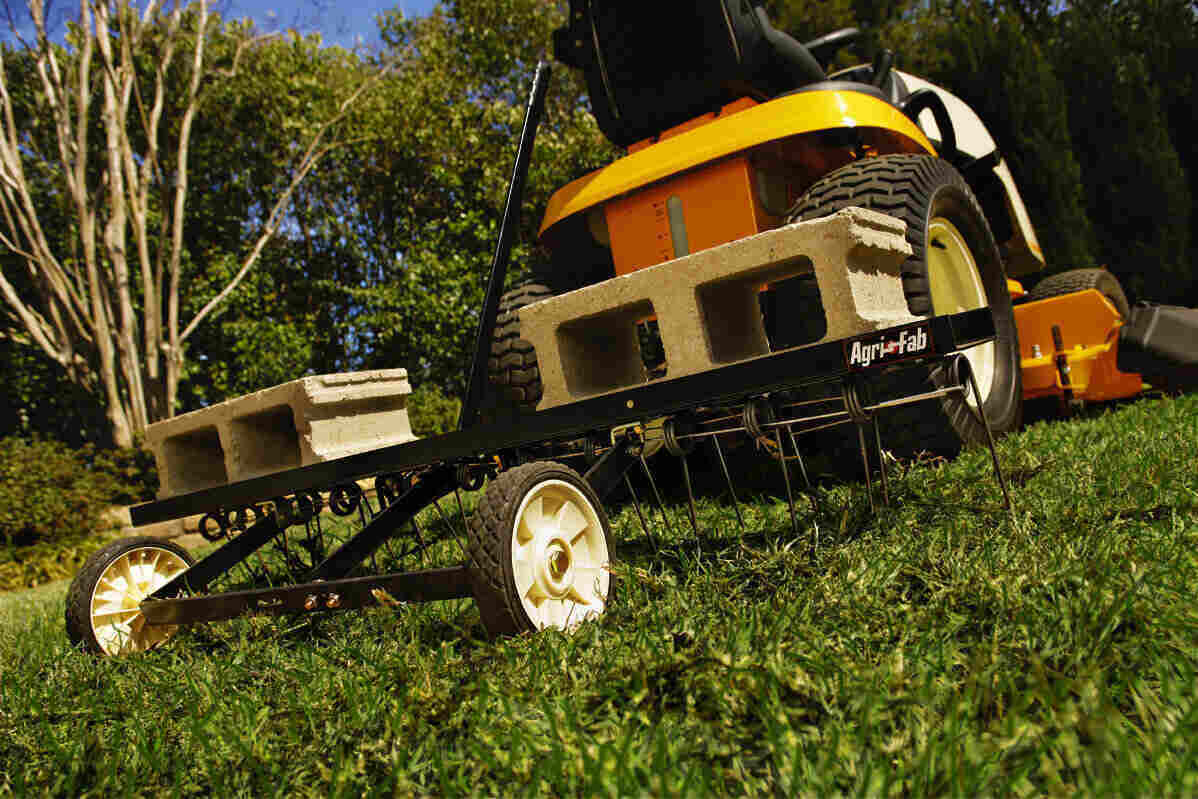
Photo Credit: Agri-Fab, Inc. / Wikimedia Commons / CC0
Thatch is a combination of living and dead plant matter that accumulates on grass. When it’s too much, it can attract pests and diseases and prevent nutrients from reaching the soil.
Raking your lawn can remove some thatch, but, you may have to dethatch your yard using a vertimower or a thatching tool when you notice thatch exceeding an inch in thickness.
When to dethatch your lawn
The best time to dethatch is when your grass is in its best shape. Warm-season grass is healthiest between late spring and early summer. Cool-season grass is in its best form between late summer and early fall.
5. Test Your Soil
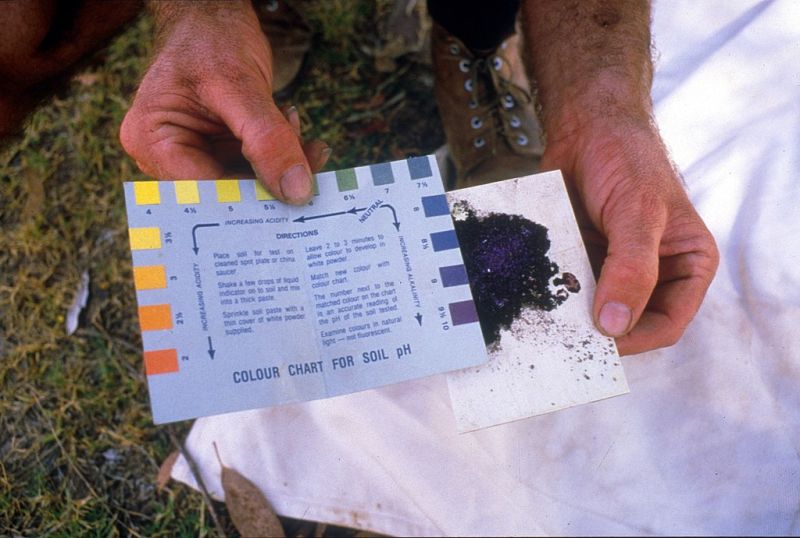
Photo Credit: CSIRO / Wikimedia Commons / CC BY 3.0
Winters are cold in Knoxville, and precipitation is high. A heavy downpour can wash away essential nutrients from the soil. Test your soil to know what’s missing and whether your soil is too acidic or alkaline.
If your soil needs nutrients, you’ll need to add amendments like calcium, potassium, phosphorus, or magnesium. If you want to fertilize your soil, wait for at least a month to prevent any interactions between amendments and fertilizer.
When and how to test your soil
You should test your soil at least once a year or before fertilizing your lawn. You may use a DIY kit to test your soil at home. However, we recommend you bring your soil to the local Extension office for a complete analysis.
6. Fertilize
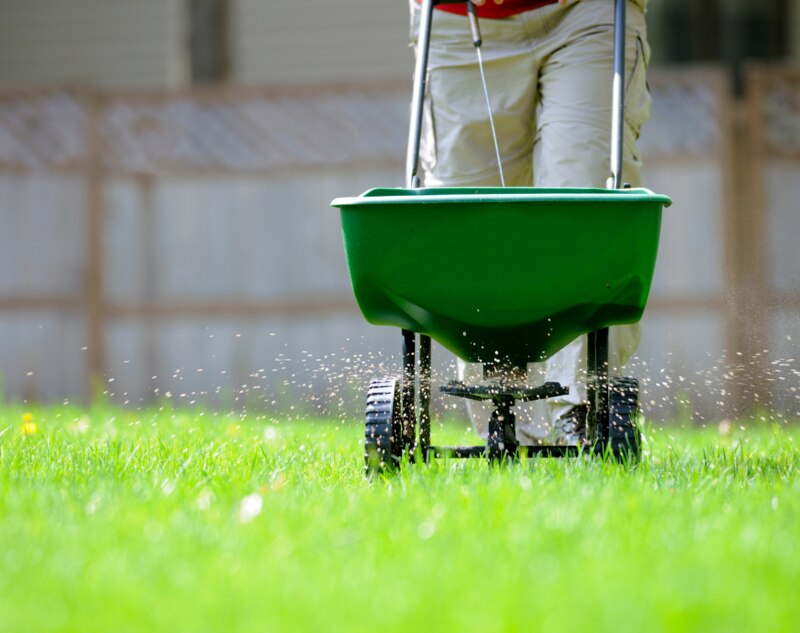
Photo Credit: groveb / Canva Pro / License
Now that you have tested your soil, you’ll know what your lawn needs. But what’s the best time to fertilize?
Fertilize warm-season grass around mid-April. Fertilize cool-season grass during fall.
Nitrogen is the primary component in most fertilizers as it’s the essential element needed for grass growth. Depending on your soil test result, you may also purchase a fertilizer rich in potassium or phosphorus.
Regardless of the nutrients, always opt for slow-release fertilizers. Fast-release fertilizers can damage your grass and sometimes even burn it. Also, use a spreader to apply fertilizer evenly instead of using your hands.
Pro tip: According to Colorado State University, fertilizing cool-season grass between March and April isn’t necessary if you have applied fertilizer the previous fall.
If you have cool-season grass, you should avoid applying fertilizer too early as it can promote rapid growth. Rapid growth may sound great, but it’s harmful to your lawn.
7. Overseed Warm-Season Grass
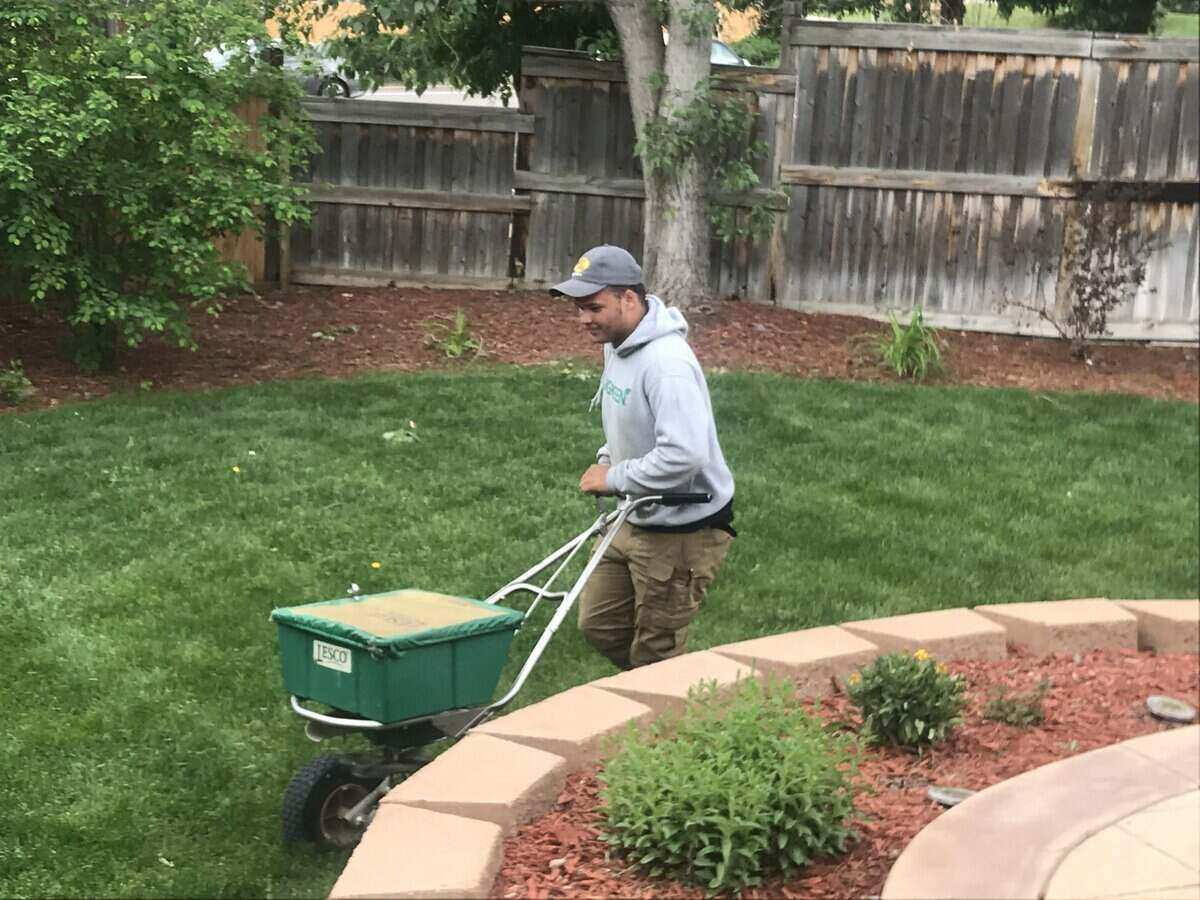
Photo Credit: Brenda Ryan / Wikilawn
Is your warm-season grass thinning? Overseeding can help. Overseeding is planting grass seeds over your existing lawn to fill bare spots and improve grass density.
Pro tip: If there are just a few bare patches in your grass, a pest may be the culprit behind them. So, go ahead and eliminate it.
When to overseed
- You should plant warm-season grass (buffalograss, centipedegrass, and Bermudagrass) between March and July.
- Cool-season grass (tall fescue, Kentucky bluegrass, and creeping red fescue) should be planted between September and mid-October.
We recommend you overseed after dethatching or aerating your lawn as it increases access to the soil. Also, ensure the newly seeded grass gets the right amount of water and fertilizer for healthy growth.
8. Mow Your Lawn
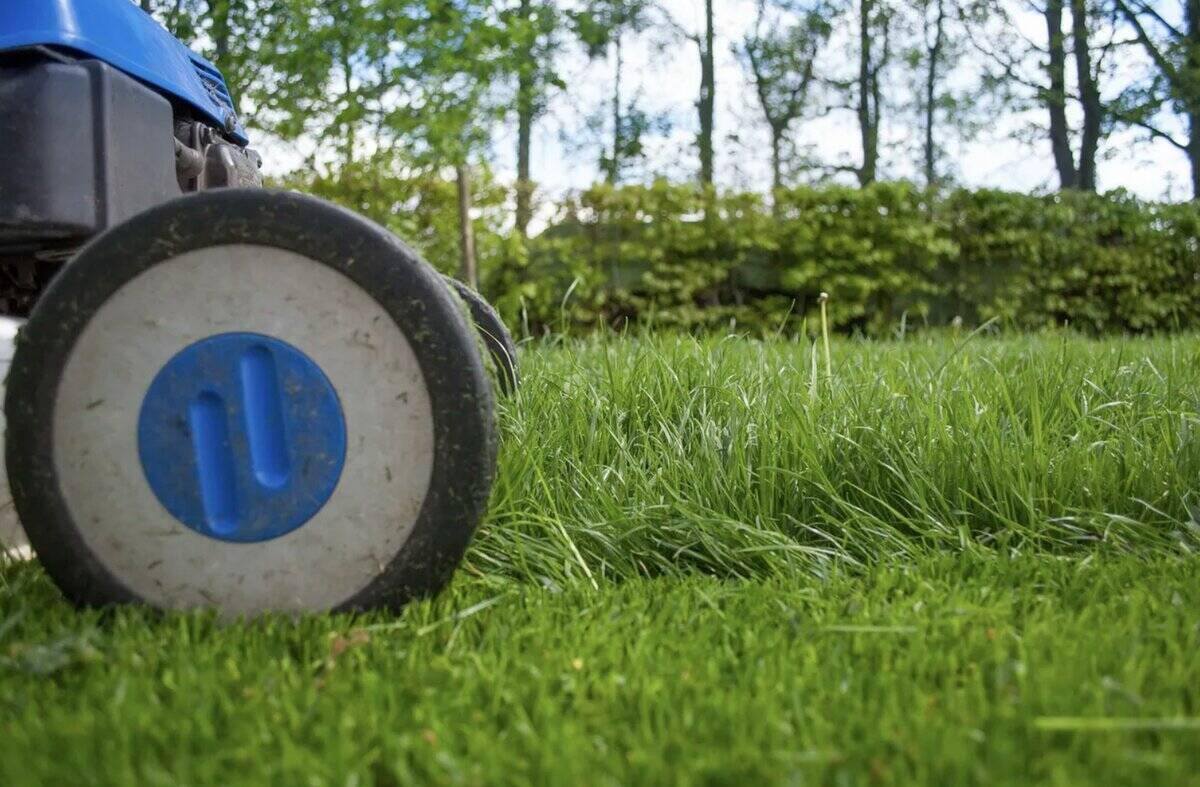
Photo Credit: Rawpixel
It’s spring! Turn on your lawn mower and start mowing, but not before your grass is at least 2 inches high.
The mowing height depends on your grass type. Here’s the recommended mowing height for the most common grasses in Knoxville.
| Grass type | Recommended height |
| Tall fescue | 2 – 3 inches |
| Bermudagrass | 1 ¼ – 1 ½ inches |
| Buffalograss | 2 – 3 inches |
| Centipedegrass | 1 – 2 inches |
| Kentucky bluegrass | 2 ½ – 3 inches |
| Creeping red fescue | 3 – 3 ½ inches |
Here are some lawn-mowing tips.
- Sharpen your lawn mower blade for a clean mow.
- Mow your lawn when it’s dry. Early evening is the best time to mow your lawn. You should avoid mowing in the morning because of moisture from fog.
- Never cut more than one-third of your grass’s total height in one mow, as it can stress the glass blades.
- Prevent clipping from building up too much, as it can block sunlight from reaching the grass.
9. Get Rid of Weeds
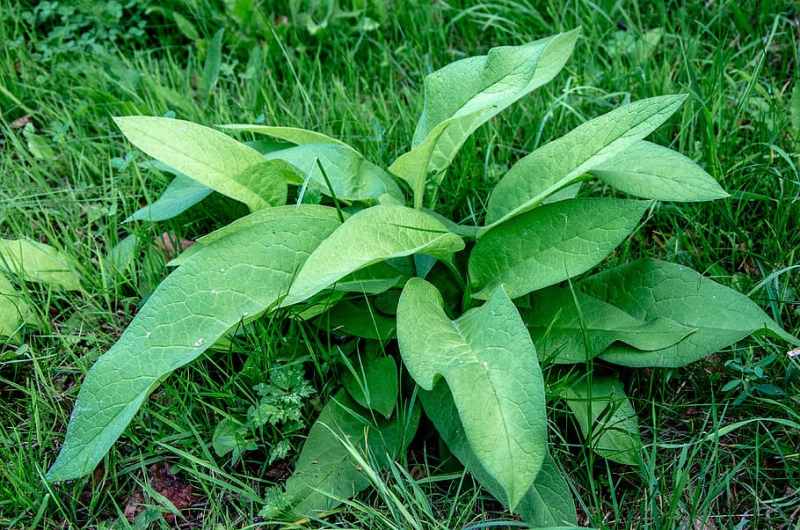
Photo Credit: Wallpaperflare
Weeds aren’t good for your lawn. So, get rid of them. You can apply a pre-emergent herbicide to prevent weeds from germinating. The best time to use these products is between late winter and early spring.
Pro tip: Don’t apply pre-emergent herbicides when you overseed as it prevents the seeds from germinating. If you have applied a pre-emergent herbicide, you may have to wait between two and four months before you can overseed.
If it’s too late to use a pre-emergent herbicide, and if weeds have already started to show up, apply a post-emergent herbicide. They only affect the weeds that have already germinated.
10. Get Rid of Pests
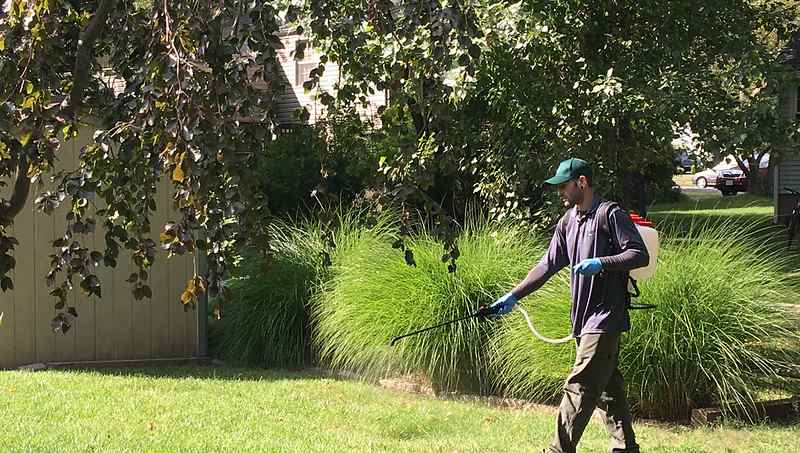
Photo Credit: Praxis Eco Pest Control / Flickr / CC BY 2.0
When spring arrives, it’s time to fight and win the battle against pests. Lawn pests in Knoxville usually reproduce during spring. Use pesticides to eliminate them before they reproduce.
We recommend you avoid using catch-all pesticides as they are less effective and can harm beneficial insects, pets, and plants. Identify the pest in your yard and use a pesticide that targets it specifically.
Here are some lawn pests common to Knoxville.
- Ants
- Wasps
- Fleas
- Spiders
- Moles
- Centipedes
- Millipedes
You can prevent pests from entering your lawn by watering your grass, fertilizing, and dethatching.
11. Water Your Lawn

Photo Credit: Michael Mol / Flickr / CC BY 2.0
Watering is necessary for a lush, green, and healthy lawn. The amount of water your yard requires depends on the grass. Keep in mind that watering too much and watering too little are both harmful to your yard.
Lawns typically require between 1 and 1.5 inches of water a week during spring. Overwatering can attract fungi and weeds and even cause thatch to build up.
Note: Don’t forget to consider weekly rainfall when watering your lawn. Alter the amount of water accordingly to prevent overwatering.
In some cases, your lawn may need more water. Here’s how you can tell:
- Wilting grass
- Grass turning gray
- Footprints not disappearing quickly
Water your lawn early in the morning (before 10 a.m.) for the best efficiency. Don’t water at night, as the extra water remaining in the soil can attract pests and increase the risk of disease.
You can use an automated irrigation system to ensure your yard gets the correct amount of water at the right time.
12. Wait To Aerate
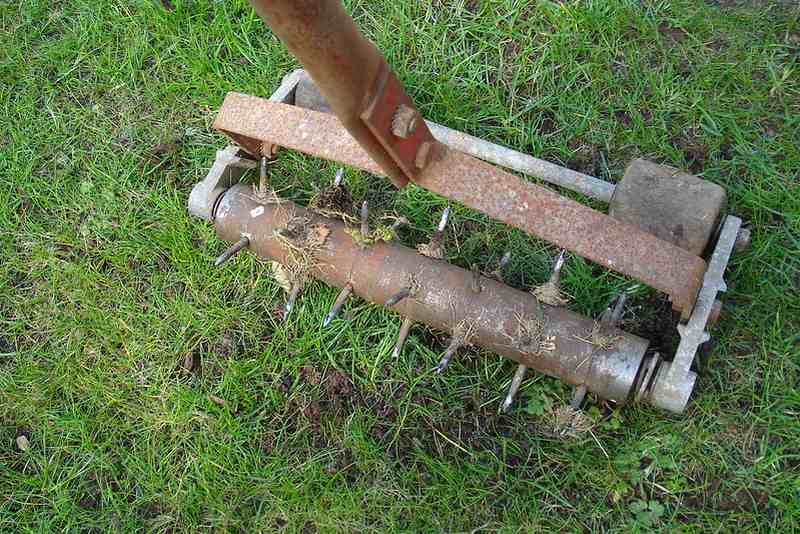
Photo Credit: allispossible.org.uk / Flickr / CC BY 2.0
Don’t aerate your lawn during spring. Instead, wait for the summer to aerate warm-season grasses and winter to aerate cool-season grasses. Aerate your yard once a year for the best results.
Aeration refers to creating holes in the ground to give roots easier access to air, water, and other nutrients. When you aerate your lawn during spring, those holes can be a lovely place for weeds to thrive.
Spring Lawn Care for a Lovely Lawn in Knoxville
Knoxville is a part of the transition zone, meaning our summers are hot and winters are cold. That doesn’t mean you can’t have a great lawn in Marble City. You just have to put in the time and effort in spring to get your yard going strong for the later months.
Raking debris, fertilizing, dethatching, and watering are all great ways to prepare your yard for the summer.
If you want to have a lush and healthy lawn without breaking a sweat, Wikilawn Knoxville lawn care experts can help. We can also create a fantastic landscape for your home to create a better living environment for your family and increase the value of your home.
Main Photo Credit: Brian Stansberry / Wikimedia Commons / CC BY 3.0